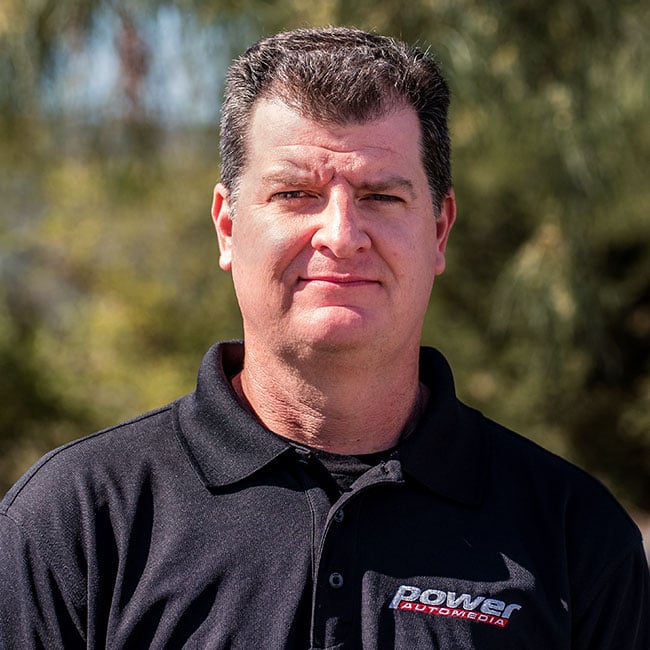By now, most of you have heard about polyurethane products. They have been on the market for a while and are known to be more durable than their rubber counterparts. And while we know a little about this product, we wanted to take a deeper dive into this technology. For help on this subject, we turned to Pete Williamsen, Marketing Representative of Energy Suspension, with a few questions to get all of the details.
What is polyurethane, and how does it differ from rubber?
Polyurethane is a synthetic polymer that consists of organic compounds that are linked together by carbamate links. The rubber that we see in the automotive world today, is a petroleum-based synthetic version of natural rubber that comes from a Rubber tree. At Energy Suspension, we have worked for years to develop our superior patented Hyper-Flex polyurethane formulas for automotive, recreational, heavy-duty, industrial, and marine applications.
Energy Suspension’s Hyper-Flex Polyurethane allows us the flexibility to match much of rubber’s isolating properties while increasing performance and durability, making it a superior choice for just about every automotive application imaginable.
What are some of the advantages of polyurethane?
There are a lot of advantages to polyurethane. From a performance perspective, polyurethane is much less prone to deflection, crushing, and compression than rubber, which translates to real-world increases in performance and durability from products made from polyurethane.
Polyurethane is much more resistant to oils, chemicals, abrasion, and weathering, and lasts far longer than its rubber counterparts. Rubber, on the other hand, tends to be much softer, prone to tearing, compression, and deflection. Rubber also inevitably rots, leading to a substantially shorter service life of rubber products. Rubber is used in OE vehicles because it tends to be cheaper, and it’s a great isolator, often being used to provide silent at smooth operation at the expense of durability and performance.
Energy Suspension’s Hyper-Flex Polyurethane allows us the flexibility to match much of rubber’s isolating properties while increasing performance and durability, making it a superior choice for just about every automotive application imaginable.
What is durometer, and how is it measured?
Durometer is a test we use to measure the initial hardness of a material by recording force required to create a depression in a material at a certain depth. Polyurethane bushings tend to have much higher durometers while combining the elasticity you find in rubbers, creating components that don’t react to load as rubber would while still being able to bend or stretch without tearing. Because of the physical properties of rubber, it has much lower durometers. As a rubber’s durometer gets higher, it often becomes less elastic and more prone to tearing.
What are some of the advantages of using polyurethane bushing for suspension, steering, transmission, and engine mounts?
Polyurethane suspension components always produce performance improvements over an equivalent rubber component. Polyurethane suspension and steering bushings cause the suspension to be more firm and provide more feedback while still isolating the suspension from the harsher elements of the road, which translates into improved handling, more consistent and responsive steering, and better driver feedback. In many cases, replacing OE rubber bushings with Hyper-Flex Polyurethane will have the same effects on performance, as you might see with a much more expensive performance suspension.
The performance effect of Hyper-Flex polyurethane engine and transmission mounts and bushings is quite simple: it puts more power to the ground more quickly and efficiently. Because the powertrain is not allowed to twist, you don’t lose power and responsiveness to the movement of the engine and transmission in relation to the vehicle.
Polyurethane bushings translate into superior performance in just about every application imaginable. Something that customers take for granted is manual transmission shifter bushings, creating a much more firm and precise shift. Steering racks and pinion bushings are other examples, giving much more responsive steering input and durability over OE rubber bushings.
Are polyurethane bushing hard to install, and are there any tips or tricks?
Often the difficulties involved in installing polyurethane bushings include the removal of the OE rubber components, especially if they’re old or worn. Once removed, polyurethane generally slips right in place. The most important and most overlooked aspect of installing polyurethane components involves lubrication. Always grease during installation. Think you’ve applied enough grease? You should probably use some more!
Energy Suspension always provides an ample supply of our Formula 5 Prelube. If you’re doing a big installation, you can purchase larger quantities from your Energy Suspension distributor along with your polyurethane components. This will ensure that you have enough on hand for the installation and servicing of Hyper-Flex Performance polyurethane components, as well as the servicing of suspension components, ball joints, and spherical bushings and joints.






















